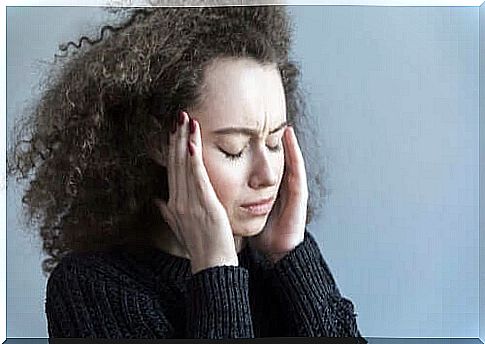Pharmacotherapy For Migraine

Migraine is the most common headache today. It is also a major cause of disability in our society, hence the importance of carrying out studies on possible treatments, both to calm acute attacks and to prevent them. These treatments constitute pharmacotherapy for migraine.
Migraine is a recurring and intense headache, generally localized on one side of the head and which manifests itself in the form of a seizure. Usually this headache is accompanied by nausea and vomiting. Hypersensitivity to light and noise are other annoyances that accompany migraine.
The different types of migraine

- Migraine with aura: This type of migraine is preceded by visual sensations called auras. This is a warning before the onset of a migraine attack
- Migraine without aura: This type of migraine is the most common. This migraine is characterized by unilateral throbbing pain, the intensity of which can be moderate or severe. Usually the pain gets worse during physical activity
- Retinal Migraine: This migraine is characterized by episodes of blurred vision that usually last for an hour. It only affects one eye
- Warning symptoms during childhood: children who will undoubtedly suffer from migraines in adulthood have recurring symptoms such as vomiting, abdominal pain or dizziness.
Risk factors
Although it is not yet clear what the causes of this pain are, we do know what the risk factors are.
The following risk factors favor the onset of this type of seizure:
- stress is one of the most important risk factors
- certain foods and drinks such as alcohol, chocolate, coffee or strong cheeses are risk factors for migraine
- intense physical exercise
- sudden temperature changes
- certain medicines such as nitroglycerin or gemfibrozil
- insomnia
- the hormonal changes in women can cause migraines (rules, early pregnancy, menopause …)
- certain smells, loud sounds, and bright lights can cause migraines
The pharmacotherapy of migraine

Regarding the pharmacotherapy of migraine, there are two main groups of drugs: drugs to treat aggressive attacks and preventive or prophylactic drugs .
Medicines used to treat acute migraine attacks
Treatment for migraine claims to make the pain go away as well as the symptoms associated with the pain.
We can distinguish three groups of drugs:
- Specific drugs: ergot alkaloids and triptans. The former are non-selective serotonin 5-HTI receptor agonists. They therefore act on various receptors in the body, causing some undesirable effects such as dependence. Triptans, on the other hand, are drugs that are selective agonists of the serotonin 5-HT1 receptor. They exert a vasoconstrictor and anti-inflammatory effect on concrete receptors such as 5-HT1B and 5-HT1D. One of the best known triptans is sumatriptan
- Non-specific drugs: nonsteroidal anti-inflammatory drugs (NSAIDs) and paracetamol: generally, they are not very effective in treating a crisis between moderate and severe. They are recommended for mild and moderate seizures
- Adjuvant drugs: These drugs are used to treat the symptoms that accompany migraine. For example: antiemetics to treat vomiting
Prophylactic drugs
When migraine attacks do not respond appropriately to treatment and when they are so frequent as to affect the quality of life, it is advisable to use preventive treatment to reduce the intensity, frequency and frequency. the duration of the seizures.
The following drugs are part of prophylactic drugs:
- propanolol
- timolol
- metoprolol
- sodium divalproate
- topiramate
- botulinum toxin
At present, new drugs have been shown to be effective in prevention with few side effects. Some of them are still the subject of certain clinical studies to possibly be approved in the near future.
To properly treat migraine, drug therapy must be combined with non-drug measures. It is just as important to have good migraine treatment as it is to take preventative treatment that can decrease the frequency and intensity of attacks.










